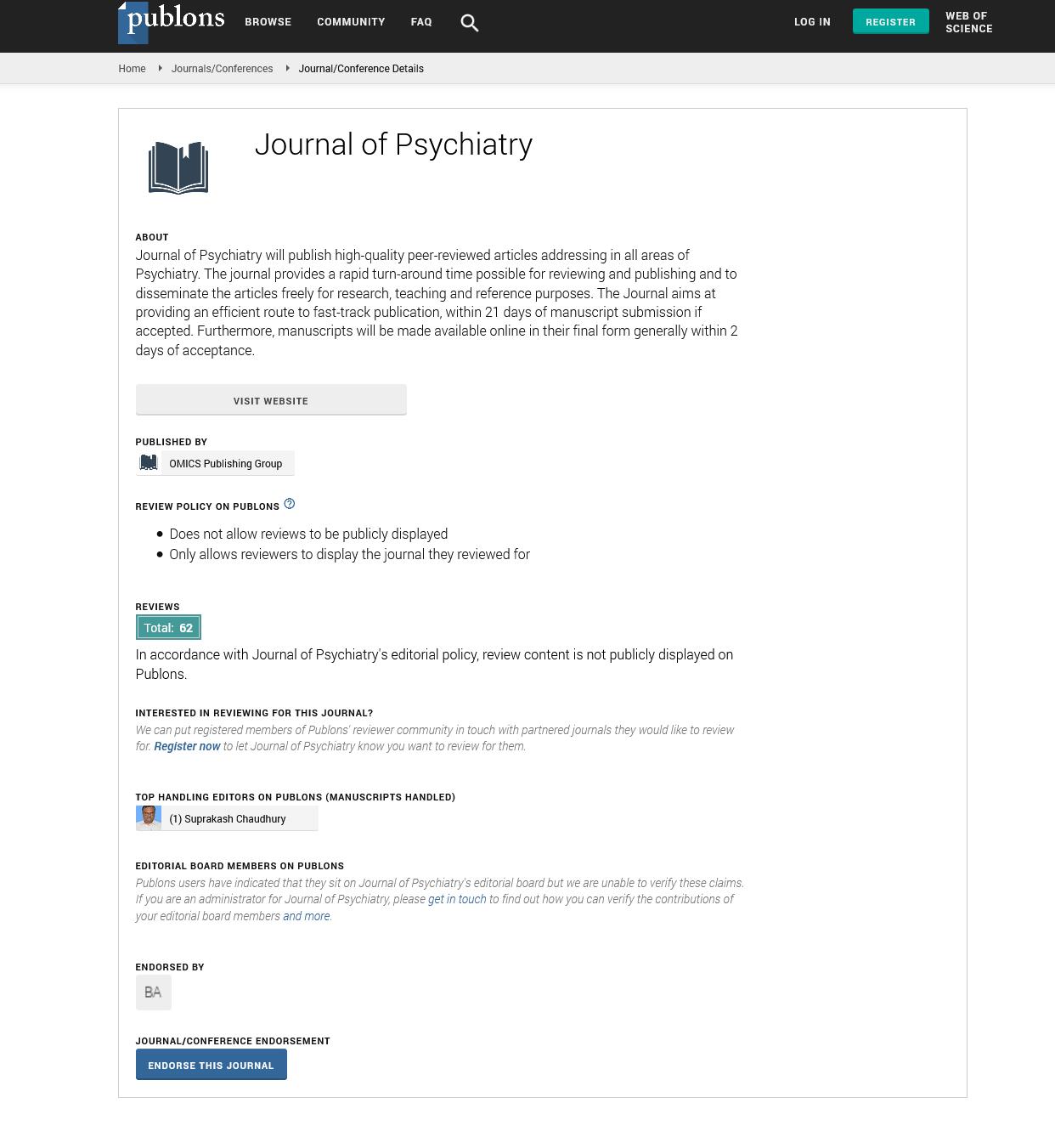Indexed In
- RefSeek
- Hamdard University
- EBSCO A-Z
- OCLC- WorldCat
- SWB online catalog
- Publons
- International committee of medical journals editors (ICMJE)
- Geneva Foundation for Medical Education and Research
Useful Links
Share This Page
Open Access Journals
- Agri and Aquaculture
- Biochemistry
- Bioinformatics & Systems Biology
- Business & Management
- Chemistry
- Clinical Sciences
- Engineering
- Food & Nutrition
- General Science
- Genetics & Molecular Biology
- Immunology & Microbiology
- Medical Sciences
- Neuroscience & Psychology
- Nursing & Health Care
- Pharmaceutical Sciences
Commentary - (2025) Volume 28, Issue 2
Suicide Risk Detection Using Natural Language Processing
David Miller*Received: 24-Feb-2025, Manuscript No. JOP-25-28812; Editor assigned: 26-Feb-2025, Pre QC No. JOP-25-28812; Reviewed: 12-Mar-2025, QC No. JOP-25-28812; Revised: 18-Mar-2025, Manuscript No. JOP-25-28812; Published: 26-Mar-2025, DOI: 10.35248/2167-0358.25.28.743
Description
Suicide is a pressing concern for societies around the world, with millions affected directly or indirectly by its impact. While traditional methods of identifying those at risk often rely on selfreporting or visible signs, recent advances in technology have opened up new methods of early recognition. Among these developments, Natural Language Processing (NLP) has emerged as a tool with the capacity to analyze digital communication in ways that were once considered impossible. NLP involves the use of computer systems to process and interpret human language. When applied to mental health, it can examine patterns in speech, writing, or online behavior that may suggest emotional distress or harmful thoughts. For individuals who are struggling internally but may not voice their concerns to friends, family, or professionals, the words they choose—especially online—can provide important indications.
Social media platforms, forums and other digital spaces have become areas where people often express their feelings more freely than in face-to-face situations. These expressions, though subtle, can sometimes suggest declining mental health. NLP tools are being trained to recognize certain emotional cues, patterns and even inconsistencies in how people write over time. This isn't limited to just recognizing words like "sad" or "depressed"; it's about identifying broader linguistic trends that can suggest hopelessness, isolation, or other warning signs. A major benefit of NLP-based analysis is its ability to process large volumes of text quickly. For instance, a healthcare system or support organization might use these methods to sift through thousands of messages or posts to identify those who may need help. This can help bring attention to individuals who otherwise might not be noticed.
Of course, applying such technology also brings responsibilities. Privacy and consent are critical considerations. Systems that monitor language for indicators of suicide risk must ensure they do not violate individuals' rights or misuse personal data. Some projects use only public data, while others work in collaboration with mental health services, ensuring users are informed and protections are in place. Another challenge lies in context. Not every message that appears negative or intense necessarily indicates a person is in danger. Irony, sarcasm and cultural differences can all affect interpretation. That's why researchers and developers work closely with mental health professionals to ensure these systems are calibrated appropriately. Machine learning models are trained not only on individual words but also on entire patterns of conversation, allowing a more accurate understanding of emotional tone and intent.
Furthermore, systems need to account for diversity. A model trained on data from one demographic might not perform well when applied to another. Language differs by age, background and region. This makes it important to build systems that are sensitive to these differences and can operate effectively across various populations. In clinical settings, NLP can be used to support professionals by highlighting cases where patients might be at higher risk based on how they speak during consultations or what they write in self-reported forms. It doesn’t replace human judgment, but it can enhance awareness and assist in earlier intervention. This may be especially useful in busy or under-resourced settings where not every sign might otherwise be picked up.
Outside clinical settings, schools, universities and even workplaces have explored using NLP tools as part of wellness programs. These systems often focus on anonymous communication to protect users' identities while still offering support if concerning language patterns are detected. The development of these tools is an evolving process. It involves ongoing adjustments and improvements as new data becomes available and as understanding of mental health deepens. What remains consistent, however, is the belief that earlier recognition of warning signs can help connect individuals with the support they need before it’s too late. Natural Language Processing may not be able to predict every case or prevent every tragedy. Still, it offers an additional layer of awareness in a world where many people silently endure emotional struggles. By analyzing language —something we all use daily—this technology provides an opportunity to listen more carefully, even when no one is speaking directly. With careful design and responsible application, it can be part of a broader strategy to support those in distress and contribute to a more responsive mental health system.
Citation: Miller D (2025). Suicide Risk Detection Using Natural Language Processing. J Psychiatry. 28:743.
Copyright: © 2025 Miller D. This is an open-access article distributed under the terms of the Creative Commons Attribution License, which permits unrestricted use, distribution and reproduction in any medium, provided the original author and source are credited.

